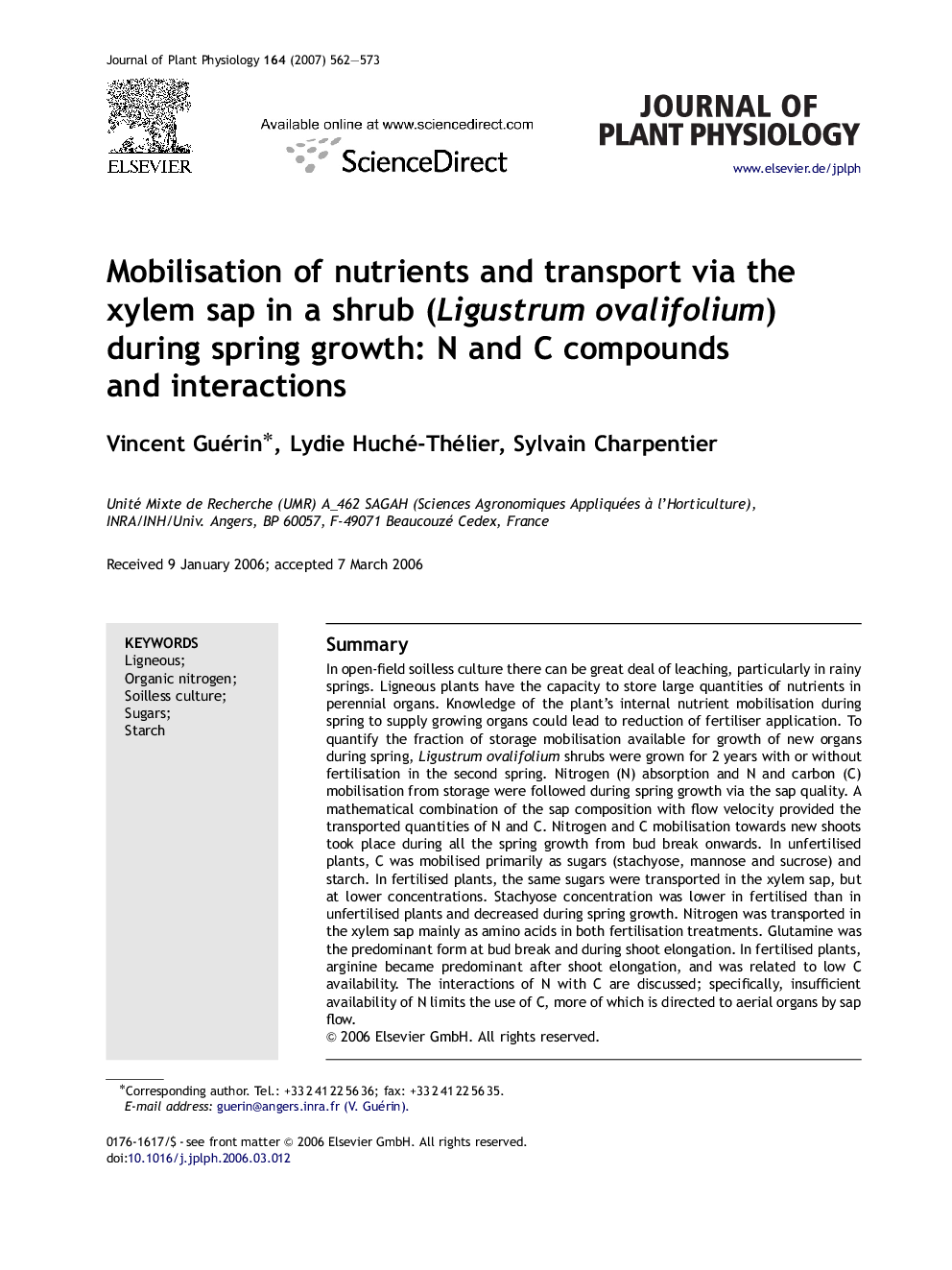| Article ID | Journal | Published Year | Pages | File Type |
|---|---|---|---|---|
| 2057692 | Journal of Plant Physiology | 2007 | 12 Pages |
SummaryIn open-field soilless culture there can be great deal of leaching, particularly in rainy springs. Ligneous plants have the capacity to store large quantities of nutrients in perennial organs. Knowledge of the plant's internal nutrient mobilisation during spring to supply growing organs could lead to reduction of fertiliser application. To quantify the fraction of storage mobilisation available for growth of new organs during spring, Ligustrum ovalifolium shrubs were grown for 2 years with or without fertilisation in the second spring. Nitrogen (N) absorption and N and carbon (C) mobilisation from storage were followed during spring growth via the sap quality. A mathematical combination of the sap composition with flow velocity provided the transported quantities of N and C. Nitrogen and C mobilisation towards new shoots took place during all the spring growth from bud break onwards. In unfertilised plants, C was mobilised primarily as sugars (stachyose, mannose and sucrose) and starch. In fertilised plants, the same sugars were transported in the xylem sap, but at lower concentrations. Stachyose concentration was lower in fertilised than in unfertilised plants and decreased during spring growth. Nitrogen was transported in the xylem sap mainly as amino acids in both fertilisation treatments. Glutamine was the predominant form at bud break and during shoot elongation. In fertilised plants, arginine became predominant after shoot elongation, and was related to low C availability. The interactions of N with C are discussed; specifically, insufficient availability of N limits the use of C, more of which is directed to aerial organs by sap flow.
